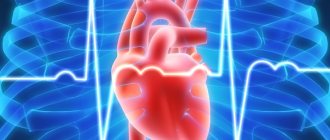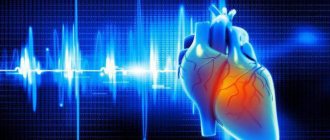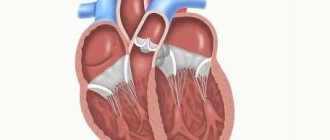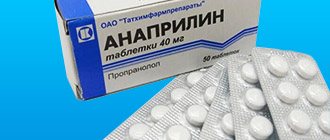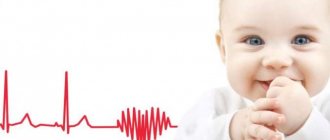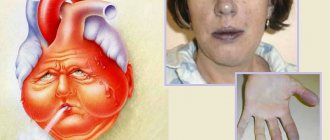A severe form of heart or vascular disease, left without proper attention and adequate treatment, almost always leads to death for the patient.
Moreover, statistical data point to the fact that such pathologies rank first in the world in terms of the number of deaths (about 57%).
In order to reduce this indicator, it is necessary to increase the level of public awareness about preventive measures.
Medical workers who have graduated from a secondary specialized educational institution are able to inform people about the importance of a healthy lifestyle, which can significantly reduce the risk of the occurrence or development of pathologies of a specific organ.
Therefore, it was decided to use the nursing process for all kinds of diseases of the cardiovascular system. The main tasks of this structure are listed in the material below.
General understanding of the work of a mid-level medical specialist
Nursing care or business is a methodology in which specially trained personnel provide assistance to people who are in unsatisfactory mental or physical condition, as well as people who have reached a disabled age.
Together with other medical personnel, the nurse determines the priority tasks, the type of care required, plans targeted intervention and proceeds to the stage of its implementation.
In addition, such personnel must have first aid skills, namely resuscitation measures.
During cardiopulmonary resuscitation, it is very important to quickly and correctly administer the necessary medications to the patient.
The main stages of the described nursing work can be distinguished:
- listening to the patient's complaints and thoroughly examining him;
- making an accurate diagnosis;
- drawing up a care plan aimed at alleviating the patient’s condition;
- implementation of planned actions;
- evaluation of the final result.
The recommendations of the nurse and the care itself take into account the individual characteristics of the body, hereditary predisposition, and living conditions of the patient.
Main syndromes and clinical picture
The specialist begins his work, as noted earlier, by listening to the patient’s complaints.
The information obtained (history) makes it possible to determine the duration of the disease, its characteristic features, the form of the existing cardiac pathology (for example, the nature of the pain syndrome in the chest during angina pectoris, heart attack, the degree of shortness of breath is determined, the connection between the manifestations of the disease and physical activity, concomitant diseases is established ).
Due to various lesions of a characteristic organ, the following types of complaints appear:
- rapid or slow heartbeat is a sign of arrhythmia;
- discomfort in a person’s “motor” (it is extremely important to be able to distinguish ischemic pain from unpleasant sensations associated with myocardial lesions);
- air deficiency - dyspnea (indicates the occurrence of congestion in the pulmonary circulation);
- dense, bluish swelling of a constant nature is considered a symptom of chronic heart failure or stenosis;
- coughing up blood particles (this phenomenon indicates pulmonary stagnation of blood, developing against the background of left ventricular failure).
Correct compilation of the clinical picture significantly influences the formulation of an objective diagnosis.
Causes and signs of the disease
Acute heart failure is a severe circulatory disorder that develops with a lack of oxygen. Among the causes are blood loss, failure of the respiratory system, heart disease, heart attack, hypertension, shock from injury, and intoxication with toxic substances.
When the lack of left ventricular blood flow predominates, blood stagnation in the lungs and saturation of the small circle with blood occurs, cardiac asthma and pulmonary edema occur.
With right ventricular failure, blood stagnates in the systemic circle, swelling occurs, blood flow decreases, and organ nutrition is disrupted.
Vascular insufficiency can be provoked by:
- stressful situations;
- physical stress;
- increased blood flow into the pulmonary circle with a sudden adoption of a vertical state.
Clinical manifestations have an initial or erased form: increased shortness of breath, inability to lie down, weakened breathing, coughing, suffocation, wheezing, whistling breathing. Then cardiac asthma and pulmonary edema occur, which, if assistance is not provided in a timely manner, cause death.
Cardiac asthma. During an attack, suffocation, difficulty breathing, a dry cough, and fear of death, which turns into panic, occur. An attack can last from 2-3 minutes to a day. Cardiac asthma is not a disease, but a condition of the body that develops as a result of a heart attack, pneumonia, kidney disease, or a sharp increase in blood pressure.
Pulmonary edema. Symptoms occur more often during night sleep, an attack of lack of air suddenly occurs, shortness of breath is not associated with the load on the heart, the patient is forced to take a sitting position due to lack of oxygen.
What is happening in the body, or signs of pulmonary edema:
- pain behind the sternum, pressing, stabbing;
- rapid breathing with audible bubbling;
- strong heartbeat, it seems to jump out of the chest;
- at first a slight cough, then a cough with strong wheezing, pinkish sputum with foam is released;
- the face is gray or bluish, then this color flows to other parts of the body due to the fact that the blood has accumulated carbon dioxide.
- sticky sweat, swollen veins in the neck, pale skin due to stagnation in the pulmonary circulation;
- there may be a surge in pressure;
- cardiac symptom: pulse is hard to palpate, weak, thread-like;
- confusion of consciousness when assistance is not provided, its absence.
In this case, the patient needs emergency assistance from medical workers, and the further prognosis of the disease, and sometimes the patient’s life, depends on their competent, clear, professional actions. For this purpose, there are special actions of the nurse, approved by the protocol, called the nursing process.
Principles of collecting information about the patient
Gathering all the necessary information and, of course, confirming that it is reliable is the first stage of the cardiovascular nursing process.
If the type of personnel in question has a complete understanding of the patient’s condition at that moment, then it becomes much easier to determine the direction of medical care.
Often the nurse will collect information from the following sources:
- from the patient being examined;
- from relatives or friends, as well as, for example, witnesses of an attack or a sharp deterioration in health;
- from attending physicians, members of the emergency team, and other medical personnel;
- from hospital documentation (for example, patient records, results of studies and tests);
- from relevant medical literature (textbooks, care guides, manuals, magazines).
Only on the basis of the data obtained can a complete picture be drawn that describes the state of human health. In addition, such awareness allows you to recognize all risk factors and analyze the need for nursing care.
The role of diagnosis
Formulating an accurate diagnosis is sometimes a rather difficult task for a mid-level specialist. It is worth understanding in more detail why this happens.
Firstly, pathology radically changes a person’s life, adding a lot of additional problems.
However, not all of them should be resolved by nursing staff.
Therefore, when drawing up the described diagnosis, it is necessary to take into account only those deviations in the functioning of the cardiovascular system that fall within the professional competence of the nurse.
Secondly, quite often the patient’s uncertainty and his problems are associated not only with a specific cardiac anomaly, but also with an incorrectly drawn up treatment regimen, the prevailing situation at home (ward), and mistrust of doctors.
Attention! The nurse's diagnosis may be subject to certain changes throughout the day or every day. After all, it has obvious differences from a medical opinion.
The task of secondary personnel is reduced to adapting the patient to life with a chronic disease. A medical worker must be able to anticipate and prevent deterioration in the health of his patient in advance.
Action planning
One of the stages of nursing care is considered to be setting tasks and defining specific goals (in some literature it is called planning).
Moreover, the desired results of such an intervention are discussed together with patients.
A specific period is given to achieve a certain goal. All records are documented. There are several types of tasks:
- Short term. These include measures to provide the patient with the most comfortable conditions for physical activity.
- Long-term. Solving such problems is associated with stabilizing the psychological state and eliminating the lack of knowledge.
The following example is relevant:
- The diagnosis is a severe form of dyspnea at rest against the background of acute heart failure.
- Achieving a positive result in the shortest possible time – reducing the degree of shortness of breath.
- A set of actions to complete this task. It is necessary to ventilate the room every 3 hours, ensure an elevated position of the head during rest, and inhalation of humidified oxygen in case of increased dyspnea. It is also recommended to eat meals in small portions and exclude foods that cause excessive accumulation of gases in the intestinal area.
The long-term goal in this case is to inform the patient's relatives about measures to reduce the severity of shortness of breath.
Diets for diseases of the cardiovascular system
Diet No. 10
Indications: diseases of the cardiovascular system without clinical signs of heart failure.
Purpose of administration: improvement of blood circulation, functioning of the cardiovascular system, liver and kidneys, normalization of metabolism, sparing the cardiovascular system and digestive organs.
General characteristics: slight decrease in energy value due to fats and partly carbohydrates. Significantly limiting the amount of sodium chloride, reducing fluid intake. The content of substances that excite the cardiovascular and nervous systems, irritate the liver and kidneys, unnecessarily burden the gastrointestinal tract, and promote flatulence is limited. The content of potassium, magnesium, lipotropic substances, and foods that have an alkalizing effect (dairy, vegetables, fruits) has been increased. Meat and fish are boiled. Avoid hard-to-digest foods. Food is prepared without salt. The food temperature is normal.
Chemical composition and energy value: proteins 90 g (55-60% animal), fats 70 g (25-30% vegetable), carbohydrates 350-400 g; energy value 2500-2600 kcal; sodium chloride 6-7 g (3-5 g per hand), free liquid 1.2 l.
Diet: 5 times a day in relatively equal portions.
Excluded products and dishes: fresh bread, butter and puff pastry products, pancakes, pancakes; legume soups, meat, fish, mushroom broths; fatty meats, goose, duck, liver, kidneys, brains, smoked meats, sausages, canned meat; fatty, salted, smoked fish, caviar, canned fish; salty and fatty cheeses; hard-boiled eggs, fried; legumes; salted, pickled, pickled vegetables; spinach, sorrel, radish, radish, garlic, onions, mushrooms; spicy, fatty and salty snacks; fruits with coarse fiber, chocolate, cakes; sauces based on meat, fish, mushroom broth, mustard, pepper, horseradish; natural coffee, cocoa; meat and cooking fats.
Diet No. 10a
Indications: diseases of the cardiovascular system with severe symptoms of heart failure.
Purposes of administration: improvement of impaired blood circulation, functions of the cardiovascular system, liver, kidneys, normalization of metabolism by removing accumulated metabolic products from the body, ensuring sparing of the cardiovascular system, kidneys, and digestive organs.
General characteristics: reduction in energy value due to proteins, carbohydrates and especially fats. The amount of sodium chloride and liquid is sharply limited. Food is prepared without salt, bread is salt-free. Foods and substances that excite the central nervous and cardiovascular systems, irritate the liver and kidneys, and promote flatulence (extractive substances from meat and fish, fiber, fatty foods, cholesterol, tea and coffee, etc.) are sharply limited. Sufficient content of potassium, lipotropic substances, foods that alkalize the body (dairy products, fruits, vegetables). Dishes are prepared boiled and mashed, giving them a sour or sweet taste and flavoring. Fried foods are prohibited. Hot and cold dishes are excluded.
Chemical composition and energy value: proteins 60 g (70% animal), fats 50 g (20-25% vegetable), carbohydrates 300 g (70-80 g sugar and other sweets); energy value 1900 kcal; sodium chloride is excluded, free liquid is 0.6-0.7 l.
Diet: 6 times a day in small portions; The diet is prescribed for a limited time - no more than 4 weeks.
Excluded products and dishes: fresh and other types of bread, baked goods; fatty, stringy meat, pork, lamb, duck, goose, sausages, smoked meats, canned food; fatty, salted, smoked fish, caviar; cheese; hard-boiled eggs, fried; millet, barley, pearl barley, legumes, pasta; fruits with coarse fiber, hard skin, grapes; chocolate, cream products; sauces based on meat, fish, mushroom broths, fatty sauces, horseradish, pepper, mustard; natural coffee, cocoa, grape juice, carbonated drinks, kvass; fats (except for fresh butter and, if tolerated, refined vegetable oils 5-10 g per dish).
Diet No. 10c
Indications: atherosclerosis with damage to the vessels of the heart, brain or other organs; myocardial infarction in the scarring stage, hypertension.
Purpose of administration: slowing the development of atherosclerosis, reducing the severity of metabolic disorders, improving blood circulation, reducing excess body weight, providing nutrition without overloading the cardiovascular system and central nervous system, liver, kidneys.
General characteristics: the diet reduces the content of animal fat and easily digestible carbohydrates. The protein content corresponds to the physiological norm. The degree to which the intake of fats and carbohydrates is reduced depends on body weight (see two diet options below). Table salt, free liquid, extractives, cholesterol are limited. The content of vitamins C and group B, linoleic acid, lipotropic substances, dietary fiber, potassium, magnesium, microelements (vegetable oils, vegetables and fruits, seafood, cottage cheese) is increased. Dishes are prepared without salt; food is added at the table. Meat and fish are boiled, vegetables and fruits with coarse fiber are chopped and boiled. The food temperature is normal.
Chemical composition and energy value:
- Option I: proteins 90-100 g (50% animal), fats 80 g (40% vegetable), carbohydrates 350-400 g (50 g sugar); energy value 2600-2700 kcal;
- Option II (with concomitant obesity): proteins 90 g, fats 70 g, carbohydrates 300 g; energy value 2200 kcal; sodium chloride 8-10 g, free liquid 1.2 l.
Diet: 5 times a day in small portions; kefir at night.
Excluded products and dishes: products made from butter and puff pastry; meat, fish, mushroom broths, legume broths; fatty meats, duck, goose, liver, kidneys, brains, sausages, smoked meats, canned food; fatty fish, salted and smoked fish, caviar; salty and fatty cheese, heavy cream, sour cream and cottage cheese; radish, radish, sorrel, spinach, mushrooms; fatty, spicy and salty seafood; limited or excluded (for obesity): grapes, raisins, sugar, honey (instead of sugar), jam, chocolate, cream products, ice cream; meat, fish, mushroom sauces, pepper, mustard; strong tea and coffee, cocoa; meat and cooking fats.
Types of staff interventions
It is worth noting that nursing intervention is any deliberate action of a health worker that brings to life a previously drawn up plan.
Such care for sick people with cardiovascular diseases consists of a variety of manipulations (care, attention, treatment, training, etc.).
The following types of nursing interventions are known:
- dependent type - carried out as prescribed by the attending doctor and strictly under his supervision (for example, dispensing medications);
- independent type - a list of nurse actions that do not require the supervision of a doctor; they are performed based on the worker’s own motives (for example, assisting a patient with eating, going to the toilet).
There are separate groups of interdependent actions that are performed in collaboration with other personnel of the medical institution.
What is nursing care for atherosclerosis
Atherosclerosis is a vascular disease, the main cause of which is long-term and persistently elevated cholesterol and LDL. It begins to accumulate on weak areas of the endothelium, turning into cholesterol tubercles. Then, in these foci, the inflammatory process begins, foam cells are formed, and more and more cholesterol molecules adhere. This is how an atheromatous plaque is formed.
This whole process is accompanied by a narrowing of the lumen of the vessel - its stenosis. This condition is most often complicated by ischemic processes. Depending on the location, it may be difficult for the patient to walk, strain, or move, and the risk of strokes and heart attacks increases significantly. That is why a number of patients with complicated diagnoses, with advanced or aggressive forms of atherosclerosis, are recommended to receive nursing care in the hospital or at home.
The essence of nurse care for patients with atherosclerosis is as follows:
- General hospital patient care.
- Drawing up and maintaining a prescribed hypocholesterol diet. In severe forms of atherosclerosis, patients may have difficulty cooking at home.
- Changing and washing linen.
- Compliance with medical recommendations and prescriptions.
- Nursing responsibility includes preparing the patient for diagnostic tests - laboratory and instrumental.
- Monitoring medication intake.
- Carrying out prescribed intravenous, intramuscular and other types of injections.
- Control over daily routine, physiotherapy and nutrition.
Activities for patient care
The principles of caring for patients with cardiovascular diseases are based primarily on the provision of qualified assistance that will ensure the full fulfillment of everyday life needs.
Activities can be temporary, permanent or rehabilitative. You should pay attention to the following actions of the nurse:
- Feeding seriously ill people according to the prescribed nutritional regimen and therapeutic diet. As a rule, the body position should be half sitting.
- Patients who have been on bed rest for a long time often change their body position, keep their skin clean (to avoid bedsores), and smooth out wrinkles in the bed linen.
- Inpatients are sanitized (for example, bathed in the shower, and if necessary, their hair is cut short).
By the way, the nursing staff should inform the doctor about all changes in the patient’s condition (coloring of the epidermis, cough, sleep, body temperature, etc.).
Nursing process for diseases of the extremities Vascular diseases of the extremities
22. 2. 3. Diseases of the arteries of the lower extremities Chronic obliterating diseases of the aorta and arteries of the lower extremities account for more than 20% of all types of cardiovascular pathology. These diseases include obliterating atherosclerosis (the most common cause of vascular obliteration), obliterating endarteritis, Raynaud's disease and diabetic angiopathy. Obliterating endarteritis. The disease is based on dystrophic damage to the arteries, mainly in the distal parts of the lower extremities, leading to stenosis and obliteration of blood vessels with the development of an ischemic symptom complex. The disease is more often observed in men aged 20-30 years. Etiology. The development of endarteritis is facilitated by prolonged hypothermia, frostbite, injuries to the lower extremities, smoking, mental trauma, infections and other causes that cause persistent vasospasm. Clinic and diagnostics. There are four stages of obliterating endarteritis. Stage 1 - stage of functional compensation. Patients are concerned about chilliness, tingling or burning in the fingertips, increased fatigue, and tiredness. When cooling, the limbs become cold to the touch and pale. After walking about one kilometer, patients begin to experience pain in the calf muscles or foot, which forces them to stop and rest (a symptom of intermittent claudication). The pulse in the arteries of the feet is weakened or not detected. Stage 2 - subcompensation stage. Intermittent claudication occurs after walking 200 meters (stage 2a) or earlier (stage 26). Trophic disorders appear on the feet and legs: dry and flaky skin, hyperkeratosis of the soles, nails become dull, brittle, thicken, and grow poorly. Hair growth on the affected limb is disrupted - the limb goes bald. Atrophy of the subcutaneous tissue and small muscles of the foot begins. Pulsation in the arteries of the feet is not detected. Stage 3 - stage of decompensation. Pain in the affected limb also appears at rest. The patient can walk 25-30 meters without pain. When going up, the limb becomes pale; when going down, the skin turns red. Bruises, abrasions, and cutting of nails lead to the formation of cracks and superficial painful ulcers. To relieve pain, patients are sometimes forced to sleep with their legs down. Due to ongoing muscle atrophy, the limb decreases in volume. The patients' ability to work is significantly reduced. Stage 4 - stage of destructive changes. Pain in the foot and toes increases and becomes unbearable. Ulcers are often located on the fingers, surrounded by an inflammatory shaft, the bottom is covered with a gray coating, and there are no granulations. Gangrene of the fingers and feet develops. There may be no pulsation in the popliteal and femoral arteries. Lost ability to work. The course of obliterating endarteritis is long with periods of exacerbations and remissions. Exacerbations are seasonal - spring, autumn. After 40-45 years, atherosclerosis of the vessels of the extremities occurs. To clarify the diagnosis, functional tests are used. Opel test (symptom of plantar ischemia): the patient is placed on the couch and asked to raise his straightened legs up. After 20-30 seconds (in the later stages after 5-6 seconds), the feet turn pale; When lowering the limbs, cyanosis of the feet appears. Panchenko's test: the patient is asked to sit with the affected leg placed on the healthy one. Soon he begins to experience pain in the calf muscles, a feeling of numbness in the foot, and a crawling sensation in the fingertips of the affected limb. Symptom of finger pressing: when the terminal phalanx of the first toe is compressed in the anteroposterior direction for 5-10 seconds in healthy people, the resulting blanching of the skin is immediately replaced by normal coloring. If blood circulation in a limb is impaired, normal skin color appears with a delay. Instrumental research methods help to establish the correct diagnosis: ultrasound Doppler sphygmomanometry, ultrasound angioscanning, contrast arteriography. Treatment. In the initial stages of the disease, conservative treatment is carried out, the purpose of which is: 1) elimination of the effects of unfavorable factors (prevention of cooling, cessation of smoking and alcohol, etc.); 2) elimination of vascular spasm with the help of antispasmodics (papaverine, drotaverine, bencyclane, prazosin, baclofen, etc.); 3) pain relief (analgesics, blockade of paravertebral sympathetic ganglia at the level of L 2—L 3, etc.); 4) improvement of metabolic processes in tissues (B vitamins, nicotinic acid, solcoseryl, actovegin); 5) normalization of blood coagulation processes, improvement of the rheological properties of blood (anticoagulants of indirect action, rheopolyglucin, trental, acetylsalicylic acid, xanthinol nicotinate, titanium Clopedine, etc.). Desensitizing, sedative, anti-inflammatory drugs, physiotherapeutic treatment (UHF therapy, electrophoresis, hydrogen sulfide baths, etc.) are also prescribed. Hyperbaric oxygen therapy has been successfully used. If there is no effect from conservative therapy, reconstructive surgery is used to restore the main blood flow; lumbar sympathectomy to eliminate spasm of peripheral arteries. In the presence of necrosis or gangrene, indications for amputation arise at different levels, up to hip amputation.
Subtleties and nuances of care
There are certain features of caring for patients in the cardiology group.
Due to the fact that some symptoms may increase or decrease, as occurs with heart failure, you should pay attention to swelling, shortness of breath, and cyanosis.
An attack of cardiac asthma is characterized by sudden suffocation, bluishness of the face, and the release of foam.
A patient with a similar clinical picture requires emergency medical care.
In addition, it is required to regularly provide the doctor with information about the patient’s blood pressure and pulse.
It is advisable to regularly donate blood and urine for biochemical analysis.
By the way, in elderly people, myocardial infarction can manifest itself completely atypically.
A healthy diet and moderate exercise not only prevent the occurrence of heart disease, but also contribute to their rapid treatment.
Nursing first aid
If a sick person begins to be bothered by sharp, severe pain in a limb, numbness, pale and cold skin at the site of pain, then he urgently needs emergency help. You need to immediately call an ambulance and put the person in a horizontal position. Another development of the clinical picture is possible - headache, dizziness, impaired memory and coordination, noise in the head. All these symptoms are signs of obliterating atherosclerosis. Therefore, the patient must be sent to the hospital. The nurse can only lay the person down, try to calm him down, and possibly give him an antispasmodic. After examination by doctors, treatment will be prescribed, maybe even surgery.
Technique for taking an electrocardiogram
Every mid-level medical specialist should be familiar with the technique of taking an electrocardiogram.
Despite the fact that there are a large number of diagnostic methods used for cardiac or vascular diseases, the ECG is still the main method for studying cardiac function.
So, the technique is as follows:
- Electrodes are applied and leads are fixed (standard, reinforced, chest).
- Then the device is connected to the network.
- The required belt speed is set.
- The reference millivolt is recorded.
- Upon completion of the procedure, the device is turned off and the electrodes are removed.
Information about the patient (name, gender, age, etc.) is attached to the ECG results obtained. Then the tape is given to the doctor.

